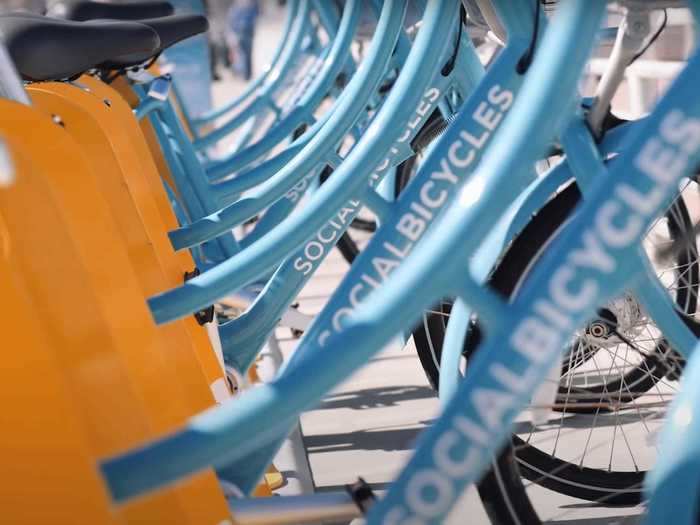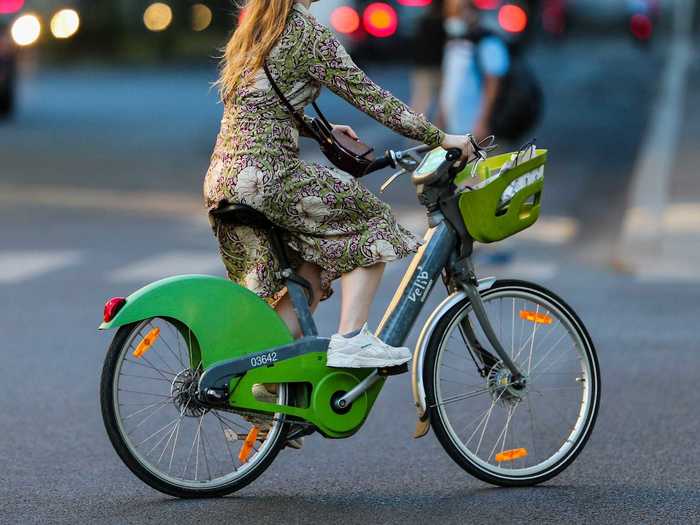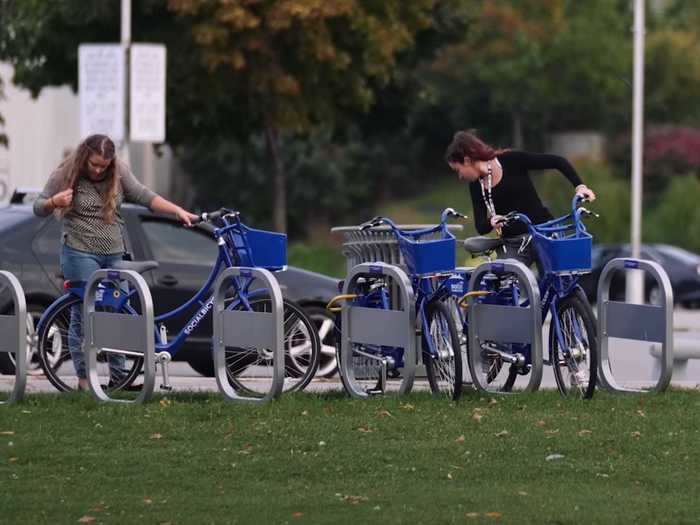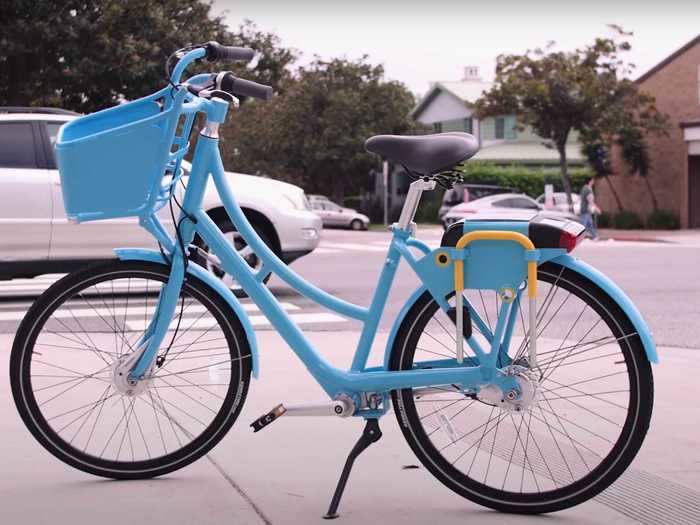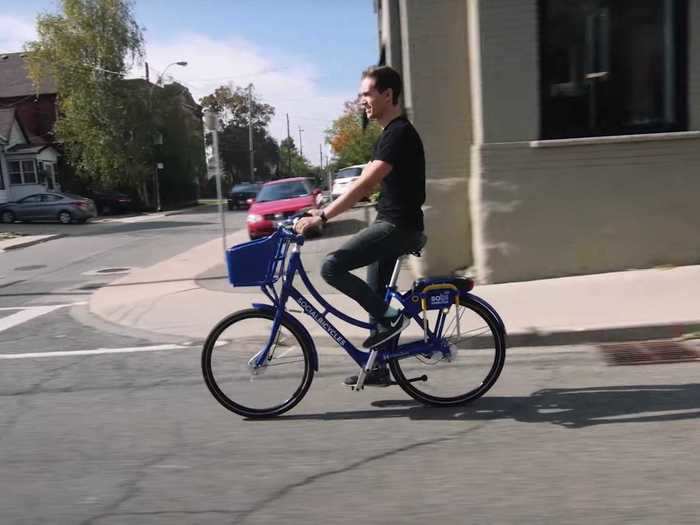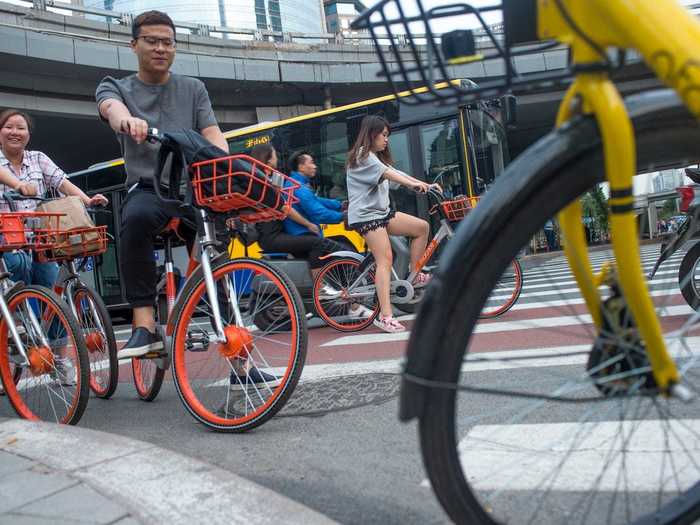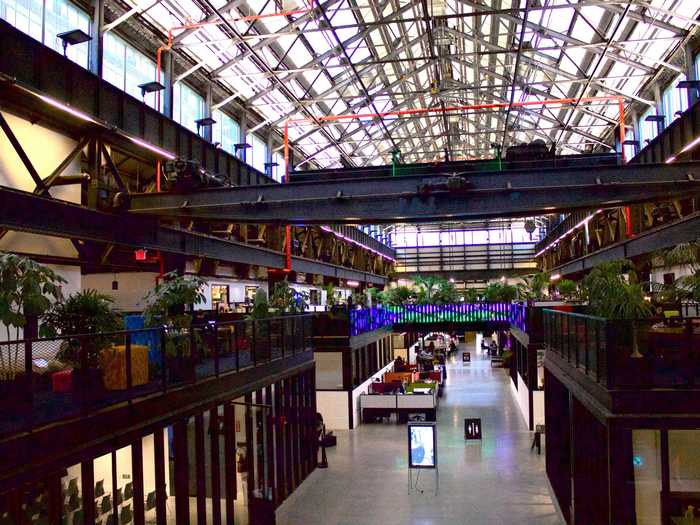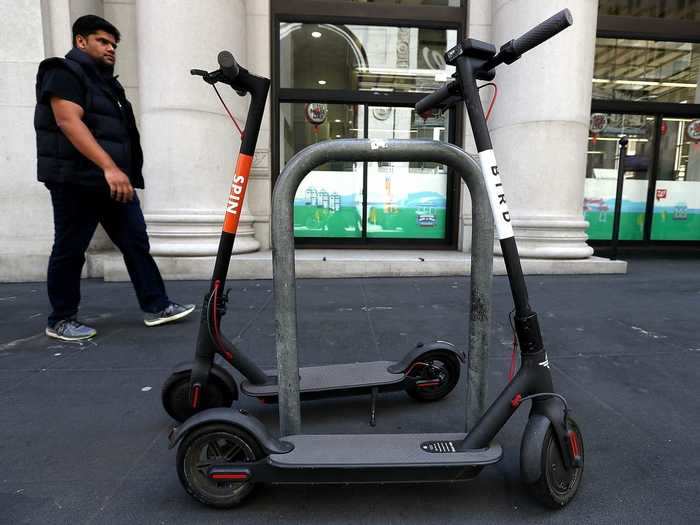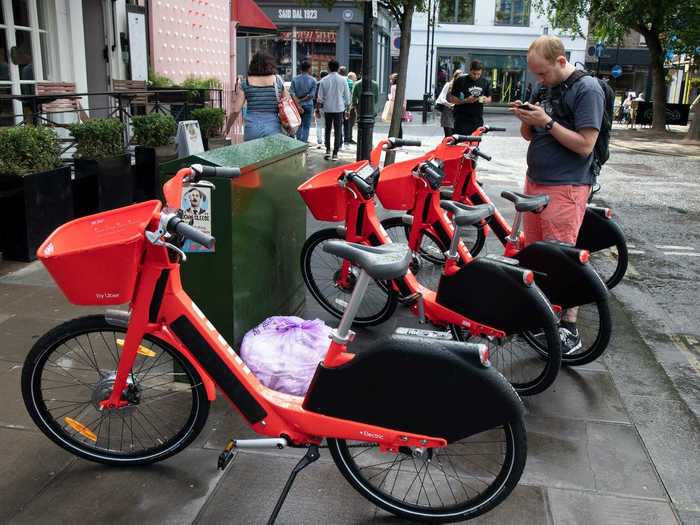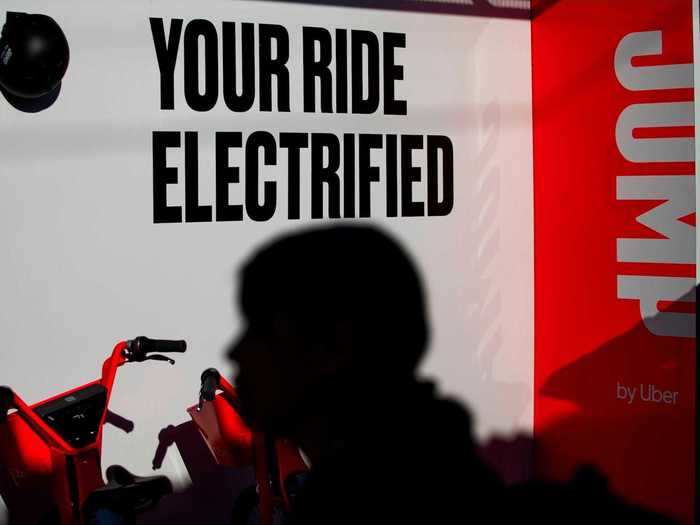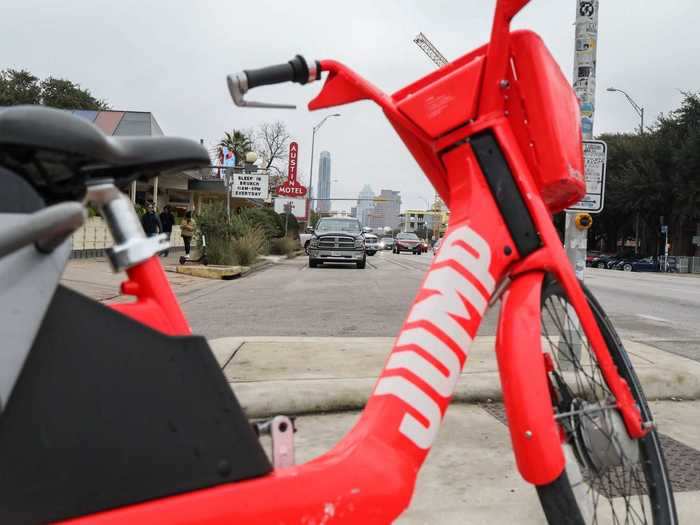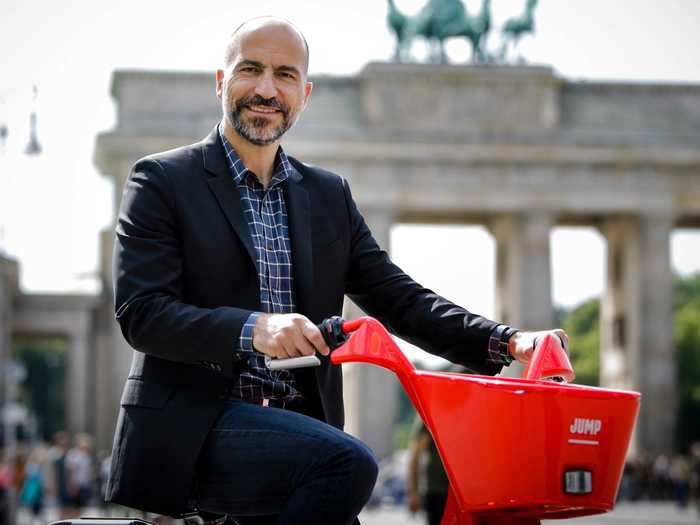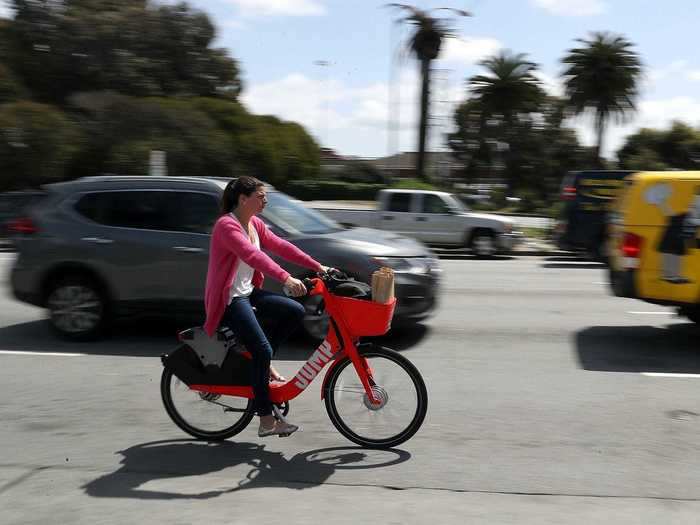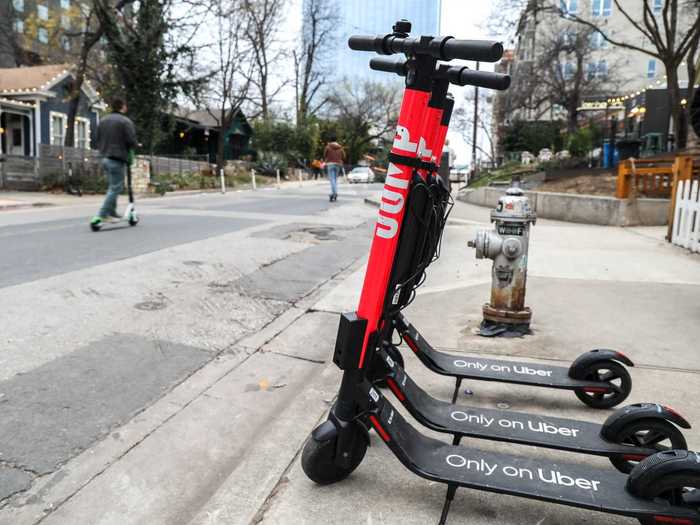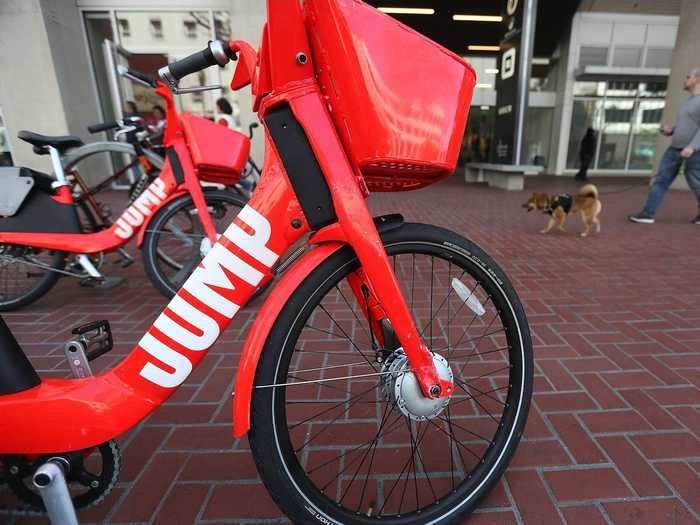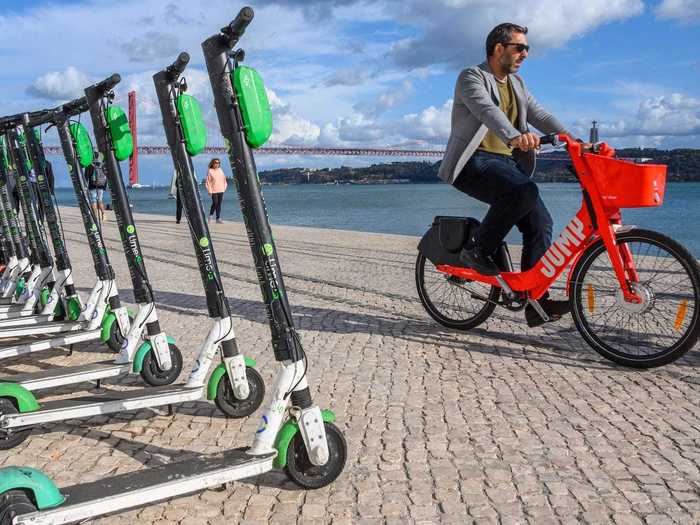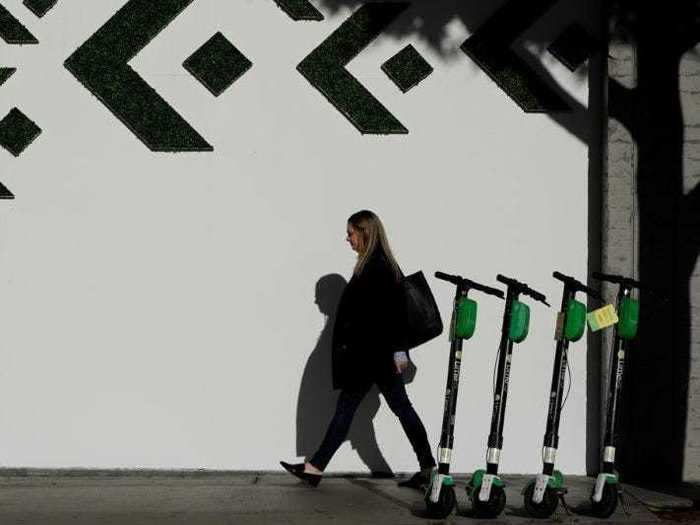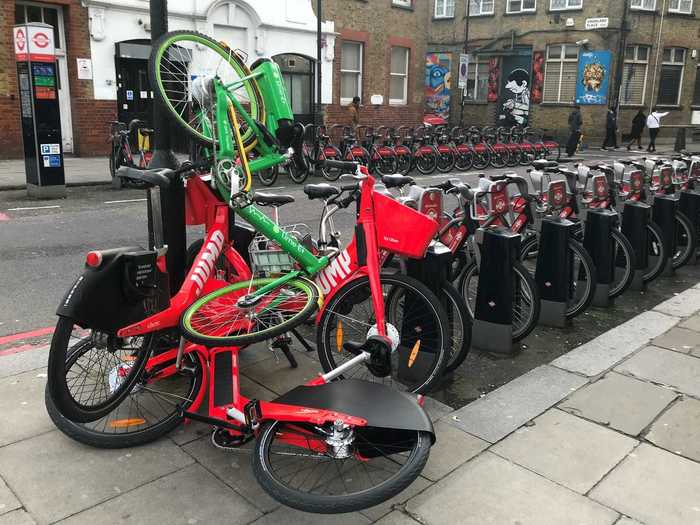An Uber JUMP on-demand dockless electric bike is pictured at Piccadilly Circus on June 01, 2019 in London, England.John Keeble/Getty Images
- Uber bought the electric bike startup Jump in 2018 for $200 million.
- The company's red, shiny e-bike technology had an edge over its competitors, promising ease of use and convenience.
- A recent Vice report details how just two years at Uber sent the company and its electric bike on a downward spiral.
- Former employees told Business Insider that Uber's New Mobility unit and its leaders lacked bike-share experience, including then-head Rachel Holt.
- "They put Rachel Holt in and she had no idea how to run a hardware company," one former employee told Business Insider. "Most say that she ran it into the ground."
The Jump bike was bred out of a vision to make bicycles more accessible to everyone as an alternative to the car.
The company's electric bike design was an impressive piece of tech — it ran smoothly, and the bikes were convenient and more user-friendly since they didn't have to be docked in designated stations.
Jump only spent two years of its 10-year lifespan at Uber. But according to a report from Vice's Aaron Gordon on Tuesday, that was enough to spell its downfall.
The Jump bike's creator and other founding team members left Uber in January, while most of Jump's employees were laid off when Uber sold Jump to rival Lime. Shortly after, footage surfaced of tens of thousands of the red-colored machines being disposed of.
Here's how the Jump bike went from being the brainchild of a reportedly scrappy, spirited, and mission-driven company to ending up being scrapped for parts two years after Uber bought it for $200 million in 2018.
Before the firm was dubbed Jump, it was a scrappy contractor called Social Bicycles.
Social Bicycles in 2016.
Social Bicycles/YouTube
Founder Ryan Rzepecki was inspired by the Parisian bike-share service Velib, according to a June report from Vice's Aaron Gordon.
A Velib bike rider on May 28, 2020, in Paris, France.
Edward Berthelot/Getty Images
He founded Social Bicycles (SoBi) in 2010.
Instead of the bikes being directly available to consumers, the company set out to offer cities the chance to purchase the company's bikes and docking stations.
Social Bicycles in 2016.
Social Bicycles/YouTube
The bikes had a GPS system and a built-in lock, and riders could leave the bikes either on the company's docking stations or on existing bike racks when they were done.
Social Bicycles in 2016.
Social Bicycles/YouTube
The goal was to make bicycles an accessible mode of transportation for everyone.
Social Bicycles in 2016.
Social Bicycles/YouTube
Employees were passionate about their mission, and the company had spirit, but the tech was flimsy at the time. One of SoBi's first customers was the San Francisco International Airport in 2012, and the bikes hardly ever worked.
SoBi finally saw its shining moment in 2016: the company became profitable and rolled out 1,000 bikes in a mega-launch with the Nike-sponsored Biketown program in Portland, Oregon.
But the bike-share arena went from small and cashless to lucrative and booming around this time as Chinese competitors like Mobike picked up steam and soon-to-be rivals like Lime entered the spotlight.
Ofo and Mobike bike-share riders on July 26, 2017, in Beijing, China.
Ann Hermes/The Christian Science Monitor via Getty Images
The market would balloon, firms would learn to skirt lengthy approval processes, and startups capable of scaling large and fast would entice Silicon Valley VCs left and right.
The Jump team grew thanks in part to a residency at Brooklyn's "New Lab" accelerator.
The New Lab.
Charlotte Hu / Business Insider
At the time, New Lab somewhat ironically warned against a "cautionary tale: the flood of bicycles into the market overwhelmed demand, resulting in vast bicycle graveyards" in China.
Many of these new "sexy" startups were embracing the free-lock model, which led to riders arbitrarily littering scooters and bikes on city sidewalks and cities.
Bird and Spin scooters on April 17, 2018, in San Francisco, California.
Justin Sullivan/Getty Images
The founder's electric bike design, however, would end up being its saving grace and give the company an edge.
Jump dockless bike-sharing electric cycle in London, England, in August 2019.
Mike Kemp/In Pictures via Getty Images
The e-bike's tech outshined that of its competitors.
An Uber event in San Francisco on September 26, 2019.
PHILIP PACHECO/AFP via Getty Images
It was intuitive, with the motor communicating with the pedals and smoothly increasing and decreasing power as needed.
"This was like the first time using an iPhone," ex-Uber exec Dmitry Shevelenko, who test rode the e-bike before the acquisition, told Vice in June. "It just feels magical."
Still, as a former employee would later tell Vice, Jump would have died much sooner if it hadn't sold to a certain ride-sharing conglomerate.
A Jump bike in Austin, Texas, in 2019.
Katie Canales/Business Insider
In 2018, SoBi rebranded as JUMP, and Uber bought the electric bike startup for $200 million.
Dara Khosrowshahi, CEO Uber, presents the Jump electric bike-sharing service at the Brandenburg Gate on June 5, 2018, in Berlin, Germany.
Thomas Koehler/Getty
It was the San Francisco-based company's first acquisition of a ride-sharing firm that utilized a mode of transportation that wasn't the car.
Using bikes and e-scooters for shorter trips instead of cars made more sense, Uber CEO Dara Khosrowshahi said in late 2018, and would help the company grow its total userbase.
The bikes were operating in Washington D.C. and San Francisco at the time, and the plan was to expand globally and roll out the bikes in cities around the world.
A cyclist rides a Jump bike on April 12, 2018, in San Francisco, California.
Justin Sullivan/Getty Images
When it first landed on the streets, riders could pay $2 for every 30 minutes they were using the bike.
Uber had an established web of cities where it had launched its carsharing, a network that could help get Jump bikes onto the streets, then-head of new mobility at Uber Rachel Holt said at Business Insider's 2018 IGNITION conference.
Rzepecki would stay on and report to Khosrowshahi.
Uber eventually rolled out a scooter sharing service with Jump electric scooters, starting in October 2018 in places like Santa Monica, California.
Jump e-scooters in Austin, Texas, in 2019.
Katie Canales/Business Insider
On May 10, 2019, Uber went public in one of the biggest IPOs of all time, with an initial market cap of $75.5 billion.
Khosrowshahi at the NYSE.
AP Photo/Richard Drew
The company had never before been profitable, and the IPO ushered in a fresh sense of urgency for the firm to turn a profit. The pressure to scale and hit growth metrics strained Jump employees at Uber as well.
As Business Insider's Brittany Chang reported in July 2019, Uber started raising prices on its Jump dockless e-bikes in several US cities.
Slowly, Uber's tech bro culture began to have an effect on Jump employees.
A Jump bike sits in front of Uber headquarters on April 12, 2018, in San Francisco, California.
Justin Sullivan/Getty Images
Uber had acquired Jump as scandals surrounding co-founder Travis Kalanick were still plaguing the company.
Former Jump employees echoed Vice's reporting to Business Insider, saying many leaders within the "new mobility" unit lacked experience doing bike-share, which is fundamentally a hardware business compared to Uber's core ride-hailing operations.
"A lot of the leadership at Uber was not qualified to be in their position," one former employee said, speaking on the condition of anonymity. "All of the NeMo leadership was not qualified. They put Rachel Holt in and she had no idea how to run a hardware company. Most say that she ran it into the ground."
In one instance, the source said, Uber had purchased "thousands and thousands" of bikes that just sat in warehouses until being deployed in local markets.
"That's one of probably the biggest reasons why we had a lot of money issue," the employee said.
In 2019, the Jump team rolled out a new, less-than-secure cable lock, which resulted in hundreds of stolen bikes.
Lime scooters and a Jump e-bike rider on October 20, 2019, in Lisbon, Portugal.
Horacio Villalobos#Corbis/Corbis via Getty Images
The company resorted to private security guards as a solution, but one of the contractors reportedly tackled a Black teen girl who was riding a Jump bike at the time.
On January 8, Business Insider reported Rzepecki and a handful of other founding employees were leaving Uber. In early May, The Information reported Uber was considering leading a $170 million emergency fundraising round for the e-scooter startup Lime.
As part of the deal, Uber will have the option to acquire Lime between 2022 and 2024. Lime now oversees Jump operations.
A woman walks past electric Lime scooters parked on the sidewalk in downtown Los Angeles, California.
Reuters
In the same week, Wayne Ting, a former longtime Uber executive, took over as Lime's CEO.
Jump employees, meanwhile, were largely let go to cut costs as the COVID-19 pandemic ravaged Uber's revenue. Not one designer behind the Jump bike or scooter will be on the team under Lime, as of right now.
Lime only acquired bikes that hadn't been rolled out for consumers yet in cities. The rest didn't transfer.
Lime-E and Uber Jump electric bikes are piled together on the street on Dec. 23, 2019, in London, England.
John Keeble/Getty Images
In late May, footage surfaced of tens of thousands of the red bikes and scooters being scrapped, according to CNN. Uber confirmed that they were being recycled.
As for Rzepecki, he's taking a hiatus following his departure from Uber.
He's reportedly using some of the cash from his $200 million sale to the ride-sharing giant to fund a charter city, or a politically autonomous, private city at an undisclosed location. The city would perhaps welcome the anticipated flood of fleeing Silicon Valley tech workers who are now remote.
Rzepecki told the Telegraph he was drawn to environmentally friendly and socially responsible private cities after witnessing the glaring wealth disparity while living in San Francisco.
Operating in a self-governed city free from a traditional government, Rzepecki said, could allow for a new way of addressing issues like homelessness and sustainability.

